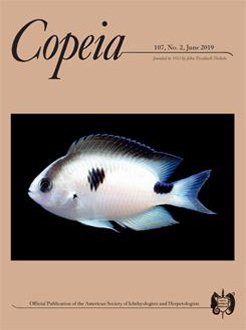In situ images and/or collection of seven specimens by underwater-vehicle dives at 269–609 m depth off Curaçao, Dominica, and Puerto Rico (S, E, and NE Caribbean) revealed new records and a previously unknown, distinctive color pattern for the cuskeel Neobythites unicolor (Ophidiidae). Species identification was based on detailed comparisons with earlier studied type and non-type material using morphometric, meristic, and otolith-form characters. A revised color description is provided based on images of live specimens in situ in their habitat, shortly after capture, and after preservation. Live and fresh specimens of Neobythites unicolor show a large number of distinctive, dark, rounded or irregularly shaped spots distributed dorsally on head, dorsal portion of body, and on the dorsal fin. This color pattern fades when fish are frozen, and it is completely lost during preservation over several years. The available images of fresh color patterns indicate an increase in spot size with fish size. In addition, some of the quantitatively examined morphometric and otolith characters of museum specimens show positive allometry. No geographic variation in color patterns could be detected. Although the Curaçao population is separated from all other known populations of N. unicolor by at least 650 km, the only population difference found was a slightly lower pectoral-fin ray count for the four specimens collected off Curaçao. An updated distribution map is provided correcting for an erroneous record in the inner Gulf of Mexico from which N. unicolor appears to be completely absent. While the spotted color pattern described here is unique among the 54 species of Neobythites, a similar pattern occurs in two other genera of the subfamily Neobythitinae, Sirembo and Spottobrotula. Further requirements to more fully understand the color diversity and related biology, ecology, and evolution in the species-rich genus Neobythites are emphasized.
How to translate text using browser tools
20 May 2019
Discovery of a Distinctive Spotted Color Pattern in the Cuskeel Neobythites unicolor (Teleostei, Ophidiidae) Based on Underwater-Vehicle Dives, with New Records from the Southern and Eastern Caribbean
Franz Uiblein,
Jørgen G. Nielsen,
Carole C. Baldwin,
Andrea M. Quattrini,
Ross Robertson






